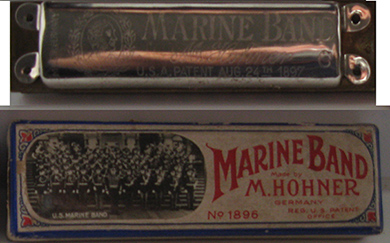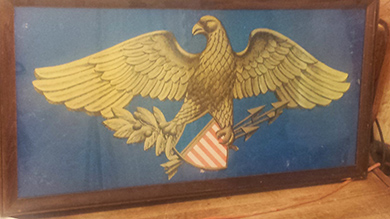 |
|
|||
 |
 |
|||
RINKER ON COLLECTIBLES — Column #1735 Copyright © Harry Rinker, LLC 2020 Questions
and Answers
QUESTION: During a visit to a small antiques shop on Warren Street in Hudson, New York, my dog pushed aside a group of frames on the floor. While reorganizing them, I discovered a John Spencer oil on canvas painting. When I took the painting to the owner, he said he had never seen the painting and asked where I found it. He asked $125.00 and settled for $100.00. The painting was part of the “Vincent Price Collection” sold by Sears, Roebuck & Co. The frame has a “Vincent Price Collection” label and the number G034770 on the back. A plaque with the artist’s name and “Winter Rome” is on the front. The image is a back view of a carriage with a driver and horse resting along a river. The painting is artist signed and dated 1960. The frame size is 19.75-inches by 25.75-inches. What information can you provide about the artist? What value would you assign to the painting? – ML, Hudson, NY, Email Question 
ANSWER: The images that accompanied your email also included the front and back of a Sears, Roebuck and Co. fact sheet entitled “from the Vincent Price collection.” I assume you found these on the internet. The top of the back of the fact sheet is headlined “Now you can acquire… / Original Works of Fine Art from Sears” and a quote from Price: “Art is for everyone, and now can be bought by everyone, at Sears. I have personally selected every item offered, and am convinced that the scope of this collection is unparalleled in the world of Art. Indeed, with Sears Easy Payment Plan, there is no need to deny yourself the pleasure and stimulation of owning as many fine works of art as you like.” Sears produced a Vincent Price Collection Graphics catalog that customers could order for free by filling in and sending a coupon attached to the sheet. A detailed history about Sears’ involvement in selling fine art and its Vincent Price Collection of Fine Art is found at http://www.searsarchives.com/history/art/index.htm. In 1962, Sears gave Price “complete authority to acquire any works he considered worthy of selection. He searched throughout the world for art to offer through Sears. He bought whole collections and even commissioned artists, including Salvador Dali, to do work specifically for the program.” Price purchased more than 2,700 works and the first 100 went on sale in October of 1962. To Sears’ surprise, it worked. People clamored to buy pieces by artists such as Albrecht Durer or Reginald Pollack. Discontinued in 1971 with over 50,000 pieces of art sold, the Vincent Price Collection largely has been forgotten or remembered as an odd moment in the historical history of art. According to the website http://www.cemanahuac.com/lacasona/johnspencer.html, John Spencer was born on April 25, 1928, in Camberly, Hampshire, England. He attended Bradfield College, Berkshire between 1942 and 1946 during which time he gained fame as a woodcarver. After spending two years in the Army, he studied sculpture at Regent Street Polytechnic for a year and painting at Camberwell School of Art from 1949 to 1952. In the 1950s, he visited Arles, France for two months. His pictures appeared in shows at the Royal Academy of Art and other English galleries. He worked as an artist in Rome from 1955 to 1960 and then in Assisi. He had his first one-man show at the Portal Gallery in London in 1964. In 1965, Spencer and his wife moved to Mexico, eventually settling in Cuernavaca outside Mexico City. He died in Cuernavaca on March 17, 2005. [AUTHOR’S ASIDE: There are numerous artists with “John Spencer”-like names such as John C. Spencer, John Clinton Spencer, and John S. Spencer. The biographies of none of these appear to fit the time frame or style of your painting. The above John Spencer is the only one whose biography appears to fit the time frame and place of your painting.] I checked multiple websites. Unfortunately, I was not able to find a secondary market track record for your painting. Relying solely on my gut instinct, a questionable but usually reliable skill acquired by appraisers and others in the trade, the $100.00 you paid was a fair price to the seller and you. The picture’s connection to the Sears Art Collection creates a great back story. I value the painting between $150.00 and $200.00. Between 1950 and 1952, Wheaties in conjunction with Walt Disney productio QUESTION: I have a Number 1896 Hohner Marine Bank harmonica in its period box. What is it worth? – DS, Lansdale, PA, Email Question 
ANSWER: The following information is excerpted from Tom Harold’s “Blue Tools – The Hohner Marine Band & Unintended Consequences” found on the website: https://www.americanbluesscene.com/blues-tools-the-hohner-marine-band-unintended-consequences/. Matthias Hohner began producing harmonicas in 1857. His firm quickly became known for high quality harmonicas that produced a pleasing sound. Hohner created the Marine Band harmonica to capitalize on the popularity of John Philip Sousa’s marching band. Hohner introduced the Marine Band model in 1896. The Marine Band harmonica is a 10-hole diatonic harmonica. At first, nickel-plated brass was used for the top and bottom cover plates. More modern examples used stainless steel. Beneath the cover are brass reed plates slotted for ten reeds on each plate, two for each hole. The reeds are fastened to a pear wood comb. Musicians quickly learned to coax more notes out of the harmonica through careful breath, lip, mouth, and especially manipulation of the tongue, control. The Hohner Marine Band harmonica became a blues favorite. Although the basic Model 1896 Marine Bank harmonica has remained unchanged since its introduction, Horner has produced over 40 different models ranging from the simple Richter diatonic with 20 reeds to the multiple tremolo with almost 200 reeds. Around the beginning of World War II, the label was printed directly on the box as opposed to a separate piece of paper. Hohner still manufactures its Marine Bank harmonica. Retail prices range from $42.50 to $47.50. Further, the harmonica is available in the keys of G, C, A, D, and E. A modern set of five sells on the secondary market between $140.00 and $190.00. It pays to shop around. As a result of the above, the secondary market value for a standard C key older Hohner Marine Bank harmonica ranges from $15.00 to $30.00 with most selling through for just over $20.00. QUESTION: A few years ago, my boyfriend and I attended a local storage auction. We bought a framed artwork featuring a federal style-American eagle with its wings fully extended and one talon holding a union shield (with no stars) beneath which are four arrows and the other talon holding an olive branch. The blue background piece is some type of paper. The eagle appears to be made of a gold-like foil. The frame measures 38-inches by 29.5 inches. It was reframed at some point. We have searched the web without any success. We are hoping it is from the Civil War. Can you point us in the right direction? – MB, Bakersfield, CA, Email Question from the late 1940s through the early 1960s. When I was in the service, m 
ANSWER: The eagle’s wing design is not typical of Civil War eagle images. A more likely origin for your artwork is the late 19th century or early 20th century, probably Spanish American War or World War I. The frame style suggests a World War I origin. I considered the possibility that the image might date as late as World War II but dismissed it. Once again, the eagle image does not look like a World War II eagle image. The frame is a good size and the theme a patriotic one. As a result, its decorative value outweighs its historical/collectible value. The image does show what appears to be water damage and/or fading of color to portions of the light blue paper. This is most likely why the piece had a new backing put on it. If the eagle image is some type of gold foil, you need to be very careful if you ever decide to reframe it again. Consider the possibility that the gold foil may be stuck to the glass. The patriotic nature of the piece is key to its value. With what is known now, it has a patriotic/decorative retail secondary market value between $85.00 and $100.00. If the date can be determined more precisely, the value will increase. If any “Rinker on Collectibles” reader can provide additional insights into this item, email them to harrylrinker@aol.com. Harry L. Rinker welcomes questions from readers about
collectibles, those mass-produced items from the twentieth and twenty-first centuries.
Selected letters will be answered in this column.
Harry cannot provide personal answers.
Photos and other material submitted cannot be
returned.
Send your questions to: Rinker on Collectibles, 5955 Mill
Point Court SE, Kentwood, MI 49512.
You also can e-mail your questions to
harrylrinker@aol.com.
Only e-mails containing a full name and mailing address
will be considered.
|
||||